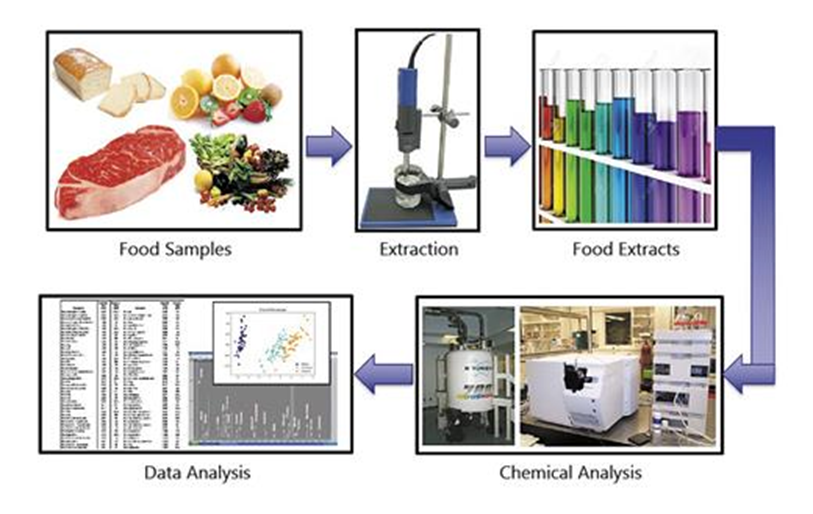What is Metabolomics?
Metabolomics is a branch of “omics” science that uses analytical chemistry techniques and computations to evaluate small complex biochemical compounds and mixtures found in the cells and fluid of the human body.
It was initially used to assess for the presence of inborn errors of metabolism in newborns. Blood spot testing using metabolomics can measure 40 metabolites, including organic acids, amino acids, and acylcarnitines, and diagnose up to 30 metabolic disorders.
The metabolomic assessment also evaluates foods themselves. It extends beyond the 30-40 nutrients that traditional food analyses measure. Instead, metabolomics can directly identify hundreds of thousands of chemical compounds, including phytonutrients, polyphenols, terpenes, pigments, etc.
Nutrition and Metabolomics
Metabolomics provides a window into an individual’s metabolism.
Food, nutrition, and health are inextricably linked. You are what you eat, and you are what you don’t eat! Recognition of this association has led to resolving several disorders using supplementation and food quality improvements. These disorders include scurvy, rickets, blindness, anemia, stunted growth, and mental handicaps…conditions remedied by targeted micronutrient supplementation [e.g., vitamins A, Bs, C, D, zinc, etc.].
Metabolomics provides a sophisticated approach to evaluating an individual’s response to nutrients and food patterns, facilitating the development of a “precision nutrition” plan. It can help overcome traditional nutrition assessment limitations that historically use 24-hour dietary recalls, food frequency questionnaires, and dietary intake diaries. These methods are flawed due to:
- Problems with recall bias
- Subjectivity
- Deliberate deception
- Memory lapses
- Inability to estimate portion sizes
- Lack of preparation details
- Food processing can interfere with and alter nutritional value
Concern about these limitations led to the 2013 creation of the Food Biomarker Alliance (FOODBALL), which uses metabolomics to evaluate food intake. FOODBALL utilizes an array of biomarkers of food intake (BFIs) found in blood, urine, tissues, and bodily fluids that reflect what is eaten and the rate at which that food is metabolized. BFIs also reflect gut microbial activity and metabolites.
Examples of BFI include:
- Urinary 1-methylhistidine and 3-methylhistidine as BFIs of meat intake
- Urinary proline-betaine as a BFI of citrus intake
- Urinary TMAO as a BFI of fish consumption
- Serum daidzein as a marker of soy intake
- Urinary 2-furoylglycine as a BFI for coffee consumption

Source: LeVatte, Marcia et al. “Applications of Metabolomics to Precision Nutrition.” Lifestyle genomics vol. 15,1 (2022): 1-9. doi:10.1159/000518489. This article is licensed under the Creative Commons Attribution-NonCommercial 4.0 International License (CC BY-NC).
Metabolomics Highlights:
- Comprehensively characterizes the thousands of chemicals in foods
- Identifies food byproducts in human biofluids or tissues
- Characterizes nutrient deficiency or excess
- Monitors biochemical responses to dietary interventions
- Tracks long-term or short-term dietary habits
- Helps evaluate individual glycemic response to various foods
- Guides the development of nutrition therapies
ODX Optimal Takeaways
Metabolomics helps confirm that “you are what you eat, and you are what you don’t eat.”
Alongside functional blood chemistry analysis, metabolomics helps evaluate the risk of several chronic conditions, including obesity, diabetes, and cardiovascular disease. It enhances the development of an individualized, “precision nutrition” plan that can pave the way on our Journey to Optimal Health (OH)!
Reference
LeVatte, Marcia et al. “Applications of Metabolomics to Precision Nutrition.” Lifestyle genomics vol. 15,1 (2022): 1-9. doi:10.1159/000518489 https://karger.com/lfg/article/15/1/1/824827/Applications-of-Metabolomics-to-Precision







